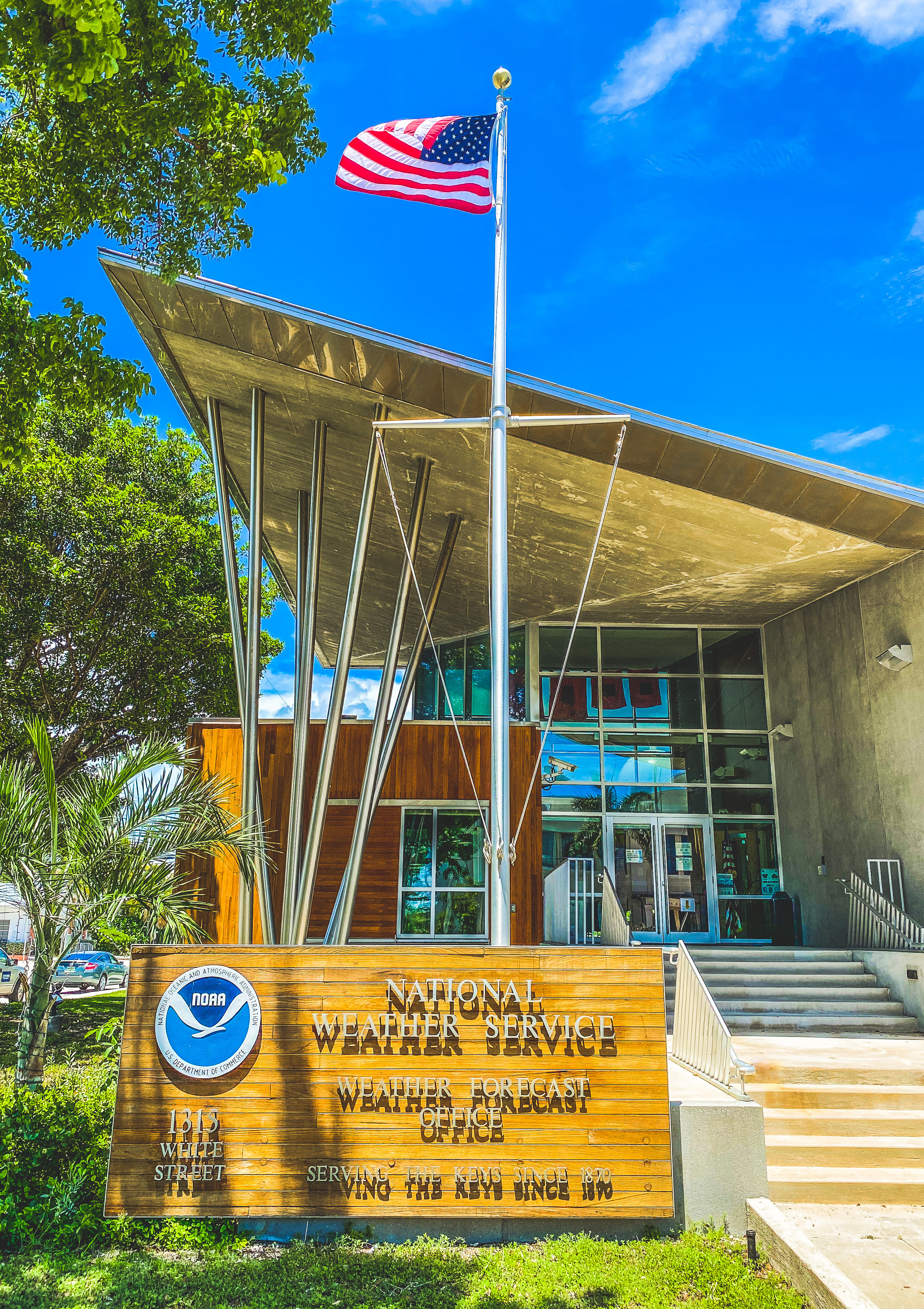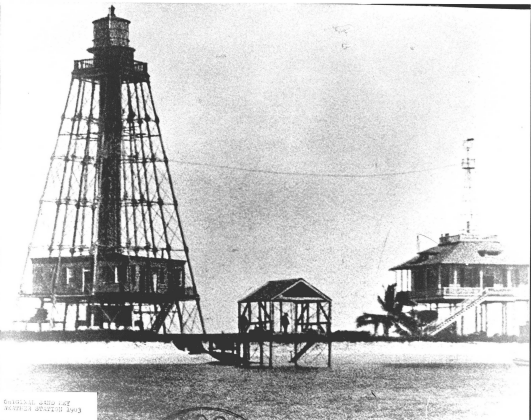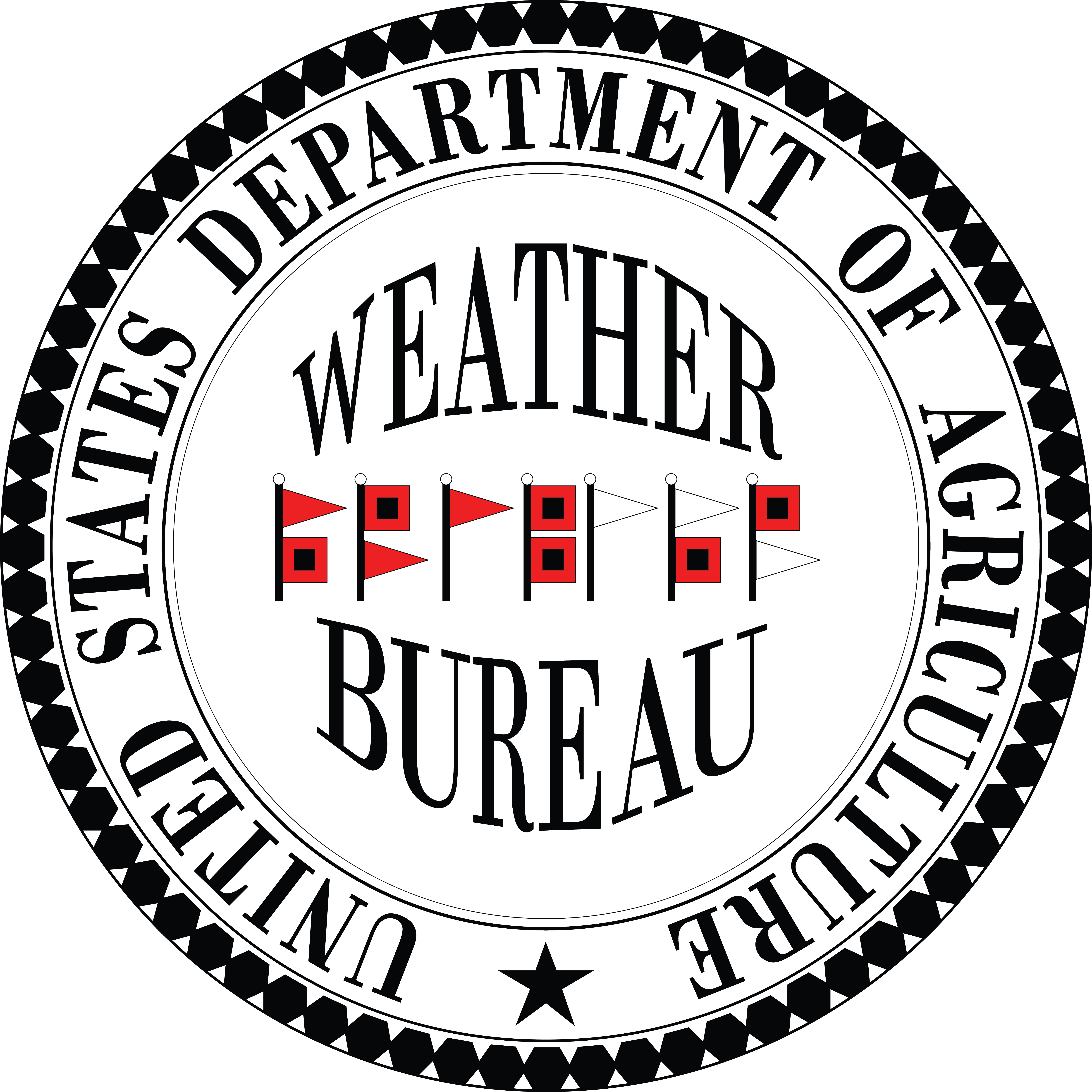
Scattered areas of heavy rain continue to produce isolated flash flooding across the Florida peninsula. Anomalous moisture will combine with a cold front and will bring heavy rain and scattered flash flooding across the Mid-South, Ohio and Tennessee Valleys today and Tuesday. Above average temperatures will continue to be found ahead of the cold front from the Midwest to the Northeast. Read More >

October 1832
Rainfall measurements begin at the Sand Key Lighthouse, ~7.5 miles southwest of Key West. The observations are not consistent though, as several of the following months are missing data. No weather agency has been organized by the U. S. Government yet.

February 9, 1870
The U.S. National Weather Service begins in the Department of the Army. President Ulysses Grant signs a joint resolution of Congress authorizing the Secretary of War to establish a weather service within the Army. Weather observations are made at 24 locations by the Army signal corps and the word “forecast” becomes established. This resolution required the Secretary of War "to provide for taking meteorological observations at the military stations in the interior of the continent and at other points in the States and Territories and for giving notice on the northern (Great) Lakes and on the seacoast by magnetic telegraph and marine signals, of the approach and force of storms. Within the Department of War, it was assigned to the Signal Service Corps under Brigadier General Albert J. Meyer. General Meyer gave the National Weather Service its first name: The Division of Telegrams and Reports for the Benefit of Commerce.

November 1, 1870
At 7:35a.m. the first systematized and synchronous meteorological reports were taken by observer-sergeants at 24 stations in the new agency. These observations, which were transmitted by telegraph to the central office in Washington, D.C., commenced the beginning of the new division of the Signal Service. A Weather Observing Station in Key West was among the original stations. Observations were taken at the Russell House on the west side of Duval Street, between Front and Green Streets.
January 1, 1871
Consistent rainfall records (no missing data) began at the Key West observation station. Consistent temperature records began in July 1872.
October 1, 1890
Due to allegations of fraud and embezzlement, President Benjamin Harrison recommended transfer of the Nation's weather services to the Department of Agriculture. Congress agreed, and an act transferring the service to the Department of Agriculture was signed into law by President Benjamin Harrison. The new agency was named the Weather Bureau.

May 23, 1903
The observing station in Key West moved 7 times between its inception in 1870. One location was the Jefferson Hotel from 1876-1886 in the Old Town area of modern day Key West. Next, the observations were taken at the Waite Building from 1887-1903. On this date, the station moved to the Weather Bureau building at Front and Eaton Streets.
October 1910
Sand Key Lighthouse and its weather station were destroyed for the second year in a row by a hurricane. The station in the Weather Bureau building in downtown Key West was also damaged as it reported a 7 foot storm surge.
October 1, 1911
The Key West Weather station was moved to the Island City National Bank Building at 205 Duval Street while the new Weather Bureau observatory was being built.
January 23, 1913
A new Weather Bureau building was completed and the observations were moved back to its previous location at Front and Eaton Street. The station remained here until 1950. The first rawinsonde, now called radiosonde, is sent aloft by balloon to radio back weather information from different levels of the atmosphere. Today, the NWS in Key West releases radiosondes twice per day, gathers and formats the information for inclusion into various computer forecast models.
June 30, 1940
The Weather Bureau was transferred to the Department of Commerce.

September 1, 1942
Upper air observations begin at Naval Air Station Key West on Boca Chica. The Weather Bureau office begins upper air observations in the late 1950s.
July 1, 1957
The Weather Bureau in Key West moves to the Key West International Airport. Duties and responsibilities included upper air and surface observations and public service. Forecasts for the entire state of Florida are issued at the state forecast office in Miami. This was true for most weather offices, as designated 'state offices' issued forecasts for the entire state.
1959
The first weather surveillance radar, WSR-57 (non-doppler) is installed at the National Hurricane Center in Miami. Also, in 1959, the U.S. launches its first satellite to send weather information back to Earth.
Early 1960
WSR-57 radar was installed at the Weather Bureau in Key West.
October 3, 1970
The Weather Bureau is renamed the National Weather Service and moved under the newly created National Oceanic and Atmospheric Administration (NOAA) in the Depart of Commerce.


January 1, 1972
Key West becomes Weather Service Office (from WBO).
1973
A new radar system was developed by the NWS, the WSR-74.
Late 1970s
300 NOAA Weather Radio (NWR) stations were installed across the country, including 1 used by the NWS in Key West. NWR is used by the NWS to effectively disseminate critical weather information The NWR station in the Keys covered the Lower and Middle Keys. The Upper Keys were covered by a station in southern Dade (now Miami-Dade) county.
1980
A WSR-74 radar was installed at the NWS office Key West.
March 1, 1996
The Automated Surface Observing System (ASOS) at the Key West airport was commissioned. ASOS automatically records and transmits surface weather data and measures cloud bases up to 12,000 feet.
December 11, 1996
The WSR-88D (weather surveillance radar) in Key West is commissioned. Key West is one of the last NWS offices to get the WSR-88D and by the end of the year, nationwide installation was complete This radar provided much improvement over existing radars The radar tower is located on the north side of Boca Chica Key.
1997
Many non forecast NWS offices are beginning to close and are consolidated into nearby offices under National Weather Service Modernization, an effort to make the NWS more efficient and save money. NWS Key West is on the list to be closed by the end of the year. Weather services will be provided by the NWS in Miami.
March 1998
After further consideration by Congress and NWS Headquarters, it is decided to keep the NWS office in Key West open and spin it up to Weather Forecast Office (WFO). The WFO concept allows one office to provide full weather services for an entire assigned area based on geography. Before, weather services for an area were split among neighboring offices. The NWS in Key West will serve the Florida Keys and a marine area covering almost 15,000 square miles across the SE Gulf, Florida Bay and Florida Straits.
May 14, 1998
The ASOS at the Marathon airport was commissioned.
May 1, 1999
WSO Key West moves from its building which it had occupied since 1957 into a section of the Adam Arnold Annex at the Key West Airport.
May 15, 1999
WSO Key West assumes most weather services for the Florida Keys and adjacent marine areas. Forecasting is still done by the WFO Miami.
July 1999
WSO Key West begins operating a second NOAA Weather radio station. The tower is located on Tea Table Key (MM 80) and covers the Middle & Upper Keys.
November 15, 1999
WSO Key West becomes WFO Key West and assumes responsibility for weather services in the Florida Keys and adjacent marine areas, including forecasts. This is the first time the office in Key West has issued forecasts on a routine basis.
January 2002
After several months of review, architectural plans are approved for the new Key West Weather Forecast Office to be built on White Street in Key West.
June 1, 2004
NWS breaks ground for a new, hurricane-resistant Weather Forecast Office in Key West. The new office will be designed to withstand wind speeds and storm surge levels associated with Category 5 hurricanes. To be constructed with a combination of concrete, reinforcing steel, and hurricane-impact-resistant glass, the new building will be designed to withstand sustained winds of 165 mph. The interior will also contain an additional concrete box designed to serve as a Severe Weather Occupancy Shelter to protect employees against winds up to 250 mph.
September 29, 2005
The National Weather Service Weather Forecast Office moved into its new building at 1315 White Street.
December 31, 2020
150 years of continuous weather observations at Key West, one of the longer periods of record for U.S. observation stations!
